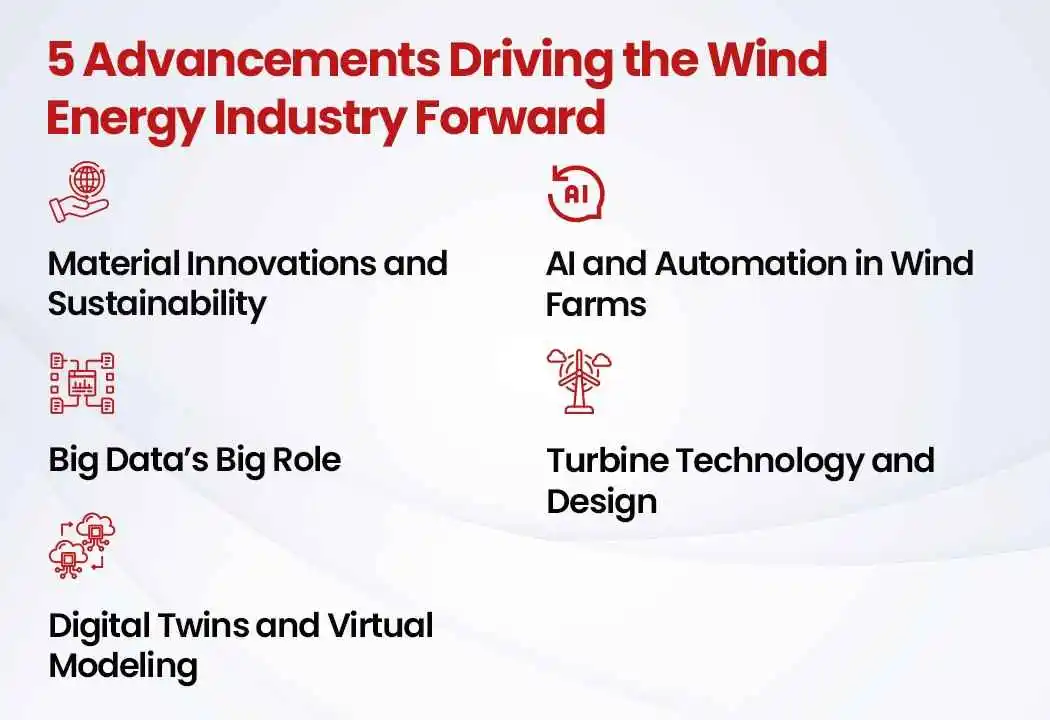Material Innovations and Sustainability
The strength of a wind turbine lies not just in its design but in the materials from which it’s built. The latest advancements in material science have introduced us to turbines that are not only stronger but also more sustainable. Innovators are now using materials that can be recycled or up-cycled, reducing waste and environmental impact.
For instance, researchers are developing new composites that make blades lighter, more durable, and easier to recycle. These materials are pivotal in creating the next generation of turbines that can withstand harsh conditions while maximizing energy capture.
AI and Automation in Wind Farms
The wind industry is not just about harnessing the breeze; it’s about doing it smartly. Artificial Intelligence (AI) and automation are the new power couple in the wind energy sector. They’re making turbines not only work harder but also work smarter.
AI is optimizing every aspect of wind energy, from design to delivery. It helps in creating more aerodynamic blades and in predicting when a turbine might need a tune-up. This means less downtime and more power generation.
Automation is also streamlining operations, allowing for remote monitoring and management of wind farms, which is especially useful in offshore settings. These smart technologies are revolutionizing how we interact with wind energy, making it more reliable and efficient.
Big Data’s Big Role
It’s like having a crystal ball that can predict the future of wind patterns, turbine health, and energy production. By analyzing vast amounts of data, operators can make informed decisions that lead to more efficient and effective wind farms.
Big data analytics help in understanding the best locations for new turbines, the optimal design for each location, and how to maintain them with minimal disruption. It’s all about getting the most energy out of every gust of wind, and big data is the key to unlocking that potential.
As we continue to collect and analyze more data, the possibilities for optimization are endless.
Turbine Technology and Design
The artistry of wind turbine design is as crucial as the science behind it. The goal is to create structures that are not only visually appealing but also highly efficient at capturing wind energy.
Recent advancements have led to innovative designs that push the limits of traditional wind turbines, particularly in the realm of floating offshore wind technology. These floating turbines are engineering feats, capable of accessing the untapped potential of strong sea winds in locations that were once considered too challenging.
Key examples of such advancements include:
- Hornsea Project Two: The UK’s flagship project, currently the largest offshore wind farm globally with a capacity of 1,386 MW.
- Moray East and Triton Knoll: Also in the UK, these projects demonstrate the potential of modern turbine technology in harsh sea conditions.
- Borssele I & II and III & IV: Dutch contributions to offshore wind energy, showcasing significant advancements in turbine efficiency and durability.
Onshore, the evolution continues with turbines reaching new heights and blades stretching longer, capturing more wind with every turn. These design improvements are not just about aesthetics; they translate directly into increased efficiency and adaptability, making wind energy a more viable option across diverse environments.
Digital Twins and Virtual Modeling
Digital twins and virtual modeling are not just futuristic concepts; they are current practices revolutionizing the industry. A digital twin is a virtual replica of a physical wind turbine, complete with all its operational characteristics.
This powerful tool allows engineers and operators to simulate and analyze performance under various conditions without the need to physically interact with the turbines.
Here’s how digital twins are optimizing wind energy operations.
- Predictive Maintenance: By mirroring the real-time status of a turbine, digital twins can predict wear and tear, suggesting maintenance before issues arise.
- Performance Optimization: They enable the testing of different scenarios to find the most efficient turbine settings for varying wind conditions.
- Design and Development: Digital twins assist in the design phase, allowing for virtual trials of new turbine models, which speeds up innovation and reduces costs.
- Cost Reduction: Virtual modeling reduces the need for physical prototypes, cutting down on development expenses.
- Increased Uptime: Predictive analytics contribute to fewer breakdowns and higher availability of turbines, thus increasing energy output.
- Risk Mitigation: By testing in a virtual environment, potential problems can be identified and addressed early, minimizing risks associated with new designs.
Digital twins and virtual modeling are key to making wind energy more reliable, efficient, and cost-effective, ensuring a stronger, more resilient energy future.








